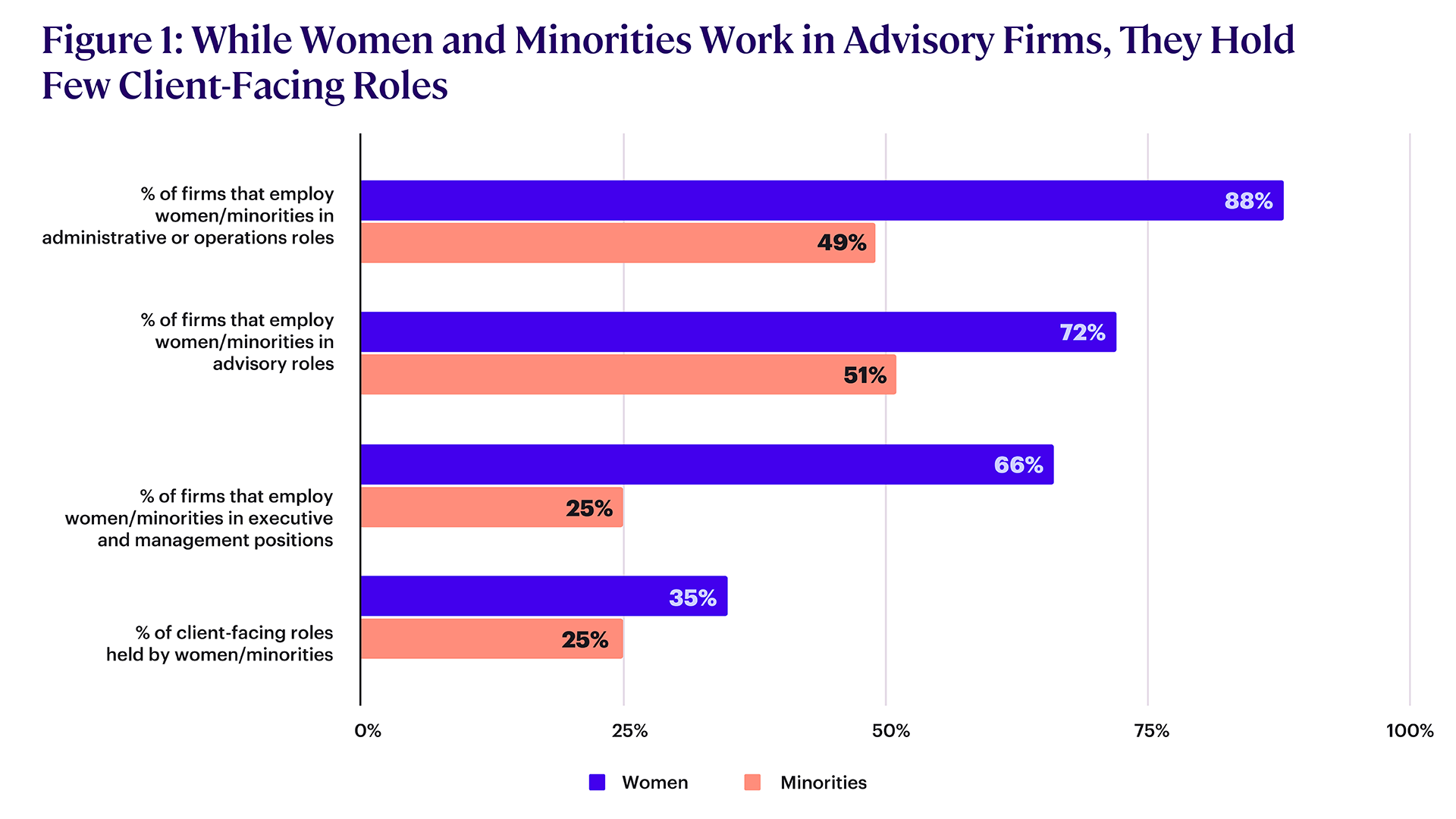Ethics In Financial Services Insights
It’s a Matter of Trust
Filabi also serves as the executive director of the American College Maguire Center for Ethics in Financial Services. The interview focuses on the findings of the Center’s “Trust in Financial Services” research, published in 2022.

This column was originally published in the Journal of Financial Service Professionals, Vol. 77, no. 2, pp. 37-39. Copyright © 2023 by the Society of Financial Service Professionals. All rights reserved.
About The College Insights
Alumni Resources

Whether this is your first designation or another step in your learning journey, you’ve reached an important academic milestone — and we salute you. You’ve also gained access to many valuable tools that can further accelerate your professional growth. You can find the full breakdown of all these resources below.
Professional Recertification Program
As a College designee, you are now part of our Professional Recertification Program (PRP). With your annual renewal fee, you get:
- Free ongoing access to Knowledge Hub+: Your home for CE and just-in-time learning on an on-demand platform
- Discounts to in-person educational events and conferences
- Advisor Toolkits to help you demonstrate your value to clients
- Another pathway to lead generation through a partnership with Couplr.AI
- Creation of a free profile on our redesigned consumer search tool YourAdvisorGuide.com
Log into your Learning Hub profile now to take advantage of these PRP benefits!
Promote Your Accomplishments
There are many ways you can spread the word about your latest designation or certification. Start by logging into your Learning Hub profile to view your award letter on the “My Designations and Certifications” page; then, you can:
- Share your digital badge on social media or in your email signature to showcase your accomplishments
- Frame your credentials! Visit our framing partner for styles, pricing, and shipping options (diplomas delivered separately); Huebner School diplomas are 11x14 inches, and graduate school diplomas are 8.5x11 inches
- Review branding guidelines for promoting your designation
- Get digital and print materials to showcase your commitment to knowledge with your Designation Toolkit
- Show your College pride by browsing our School Store! Choose from a wide selection of high-quality College-branded merchandise including apparel, mugs, travel bags, and more!
Take Your Next Step
Learning never stops — so why should you? Continue your pursuit of lifelong learning with another course or program from The College!
- Review the Designation Overview Guide to see all currently available programs, including how stackable course requirements can help you finish faster!
- Take a deeper look at how The College facilitates your lifelong learning journey and ongoing growth
- See the impact of the designations you’ve received on your peers’ business — and how additional designations can power your growth
- Attend a College event for further opportunities for professional development and networking
Giving Back
If you’d like to pay forward how The College has supported your growth and help other financial professionals do the same — as well as shaping the future of society at large — you can support our mission in various ways:
- Give directly to The College to support a chosen scholarship, Center of Excellence, event, or impact initiative
- Visit our Centers of Excellence to learn more about their missions and engage with them through their programs and events
Learn more about the resources available to you as a valued College alum.
Orientation Webinar
Retirement Planning Research
2020 Retirement Income Literacy Survey Results
The survey, the third of its kind performed by The College, included feedback from over 1,500 people nationwide. It raised concerning questions about how well-prepared many older Americans are to leave the workforce and draw down their savings and accumulated assets, despite an increased focus on educating the general public about the importance of proper retirement planning.
To qualify for participation in the study from April 29 to May 18, 2020, during the beginning of the Covid-19 pandemic, participants had to be between 50 and 75 years old and have at least $100,000 in household assets (not including their primary residence). They were then asked to respond to a series of 78 questions assessing their financial and social status and testing their knowledge of basic financial planning and retirement planning principles. On the 38 questions that addressed retirement planning, 81% of participants received a failing grade, indicating a distressing lack of understanding regarding financial planning fundamentals or current retirement realities. In fact, the overall average score on the quiz was 42%, with only a third of consumers attesting to confidence in their retirement planning skills.
Faculty at The College expressed unease about the study's results – especially considering Covid-19 pushed many consumers toward unplanned and premature retirements.
“With a troubled economy and an acceleration of early or forced retirements, consumer understanding of retirement principles is particularly important. Yet the survey demonstrates that retirement literacy remains troublingly low,” said Steve Parrish, JD, RICP®, CLU®, ChFC®, RHU®, AEP®, Adjunct Professor of Advanced Planning in The College’s Retirement Income Certified Professional® (RICP®) Program.
The Income and Investment Knowledge Gap
The general lack of retirement knowledge among consumers who took the survey was broad in scope, covering many concepts College faculty and industry experts agree are fundamental to sound retirement planning. More than half of respondents underestimated the current life expectancy of a 65-year-old man, suggesting they may not realize how long their accumulated assets may have to last in retirement. Only 32% were aware of the limits on amounts they could safely withdraw from a retirement account each year without suffering tax penalties, and 65% didn’t know that a negative single-year return in a retirement portfolio is more impactful if it happens at the time of retirement rather than before or after, suggesting a lack of understanding in how the pre-retirement period factors into long-term planning.
“Determining how much you can spend in retirement when you don’t know how long you will live or what market returns you will experience is complicated,” said Wade Pfau, PhD, CFA, RICP®, Professor of Practice at The College. “Unfortunately, the task is even harder for Americans who do not recognize how to properly evaluate these risks in the first place. The survey demonstrates that these retirees don’t fully understand the consequences a bad market can have on their long-term retirement prospects.”
In addition, while over 60% of consumers reported on the survey they felt at least moderately knowledgeable about investment management, survey results showed that, in practice, these individuals might be overconfident in their abilities. Only 18% of those surveyed knew B-rated corporate bonds had a higher yield than AAA corporate bonds or treasury bonds. Furthermore, only 26% understood the relationship between bonds and bond funds and interest rates, demonstrating a cognitive dissonance regarding investing.
Long-Term Care Realities Leave Many Unprepared
With the public health crisis of the Covid-19 pandemic looming large over society, the survey found that considerations about long-term healthcare needs caught most consumers off-guard. Only 31% of survey respondents said they had a plan in place for how to fund long-term care needs, and only 23% said they had some kind of long-term care insurance.
The divergence between belief and reality regarding the need for such insurance was even more concerning. Only half of the respondents said they considered it even somewhat likely they would need long-term care services in the future when industry statistics state at least 70% will. More than half said they hadn’t considered long-term care a factor in their retirement plans. In addition, many consumers didn’t understand the burden the lack of such insurance could place on their loved ones: just 25% knew that family members provide the majority of long-term care services nationally, and 70% said they didn’t expect their own family to provide such care – a potentially dangerous disconnect.
“The story coming from the data suggests people underestimate their life expectancy – and what’s more, assume they will be healthy for the entirety of their life – when the truth is much different,” said Timi Joy Jorgensen, PhD, Director to Assistant Vice President of Financial Education & Well-Being at The College.
Pandemic Highlights Importance of Preparedness
Another effect of the Covid-19 pandemic on retirement planning could be felt in reactions to the market downturn it created. Surprisingly, nearly 40% of consumers reported feeling highly prepared for market turbulence, indicating an unanticipated strength of financial advice – and having a formal plan beforehand was frequently cited as a difference-maker.
While only one in three respondents reported having a written plan for retirement, those with the plan reported feeling much more prepared to deal with the downturn than those without. 54% of respondents said their financial plans are holding steady despite rough seas. However, the onset of the pandemic also shifted the mindset of many consumers, with 40% saying they now feel less comfortable taking investment risks.
“A bottom-line conclusion from this survey is that until the plan is written, it isn’t real,” said Parrish. “We are in an environment where people are coming into retirement sometimes faster than expected, without an approach to converting their pot of money into a stream of income, and yet they are looking at increased life expectancy, increased risk of a long-term care event, and decreased prospects of having their needs covered by Social Security and employer plans.”
While the stakes in the retirement planning game may be high, College thought leaders offered words of encouragement to those who may have participated in the survey and professionals in the field.
“This is a clarion call for financial advisors to help their clients increase financial literacy and, together, craft a plan for a successful retirement,” said Parrish. “Advisors should take heed of this situation and embrace the opportunity it provides to help Americans prepare for a successful retirement.”
Jorgensen agreed with his sentiments in her own statement, especially when it came to long-term care planning. “Well-prepared advisors can help with important long-term care conversations and work with clients to plan when and how to have these crucial discussions with family about the likelihood of healthcare needs,” she said.
You can see the full results of the 2020 Retirement Income Literacy Survey here.
Representation Research
How Can Financial Advisory Firms Prepare for A More Diverse Future?
The Current Situation
It is no secret that the financial advice industry has remained largely aging, male, and White even as America has grown more diverse, and women and minorities have gained control of a greater share of the nation’s wealth (see Figure 1).
- American women control more than $10 trillion of financial assets.
- Between 2016 and 2019, Black and Hispanic family wealth rose 33% and 65%, respectively, compared to 3% for white families.

The American College of Financial Services. Diversity & Inclusion in Financial Advice 2020. 2020.
As a result, many industry experts worry about the profession’s long-term growth and survival prospects. Unless firms can attract more minority, young, and female practitioners, there is a real risk that the industry will struggle to remain relevant in the decades ahead.
To better understand the factors driving the industry’s lack of diversity and what is needed to promote change, we conducted The American College of Financial Services Diversity & Inclusion in Financial Advice Survey. Here is what we found.
The Roadblocks
Almost 60% of respondents to the survey recognized that lack of diversity is a problem within the advice business. However, relatively few believed that their firms are working to resolve the problem:
- Only 35% said their firm tries to foster racial diversity in its staff.
- Only 36% said their firm works with suppliers committed to diversity.
Our research found that there are several structural factors standing in the way of increased diversity in financial advisory firms.
- Limited Entry Points – Less than 20% of firms used online postings to recruit new advisors, with 44% preferring to use networking. Unfortunately, by relying on networking for new talent, advisory firms tend to replicate the demographic mix of their current advisors and staff.
- Business-building Expectations – Many firms expect advisors to pay for themselves immediately or very quickly. They, therefore, tend to hire already-successful advisors who arrive with their own book of business, which results in no change in the industry’s demographics. Firms also often expect new advisors to rely on their own network of affluent investors to build a book of business and generate leads, which disadvantages candidates from less privileged backgrounds who do not have a network to tap.
- Lack of Transparency in Distributing Sales Leads – While 60% of advisors felt leads and new clients were distributed fairly at their firm, 71% of firms lack a visible process for distributing leads. With limited transparency and accountability in how leads are distributed, women and minority advisors may find themselves at a disadvantage.
The Solution
There are many actions that firms can take to accelerate their diversity efforts, including: Appoint an executive with formal responsibility for diversity. Developing mentoring programs. Implementing collaborative conflict resolution procedures. Allowing anonymous reporting of harassment. Setting formal workforce diversity goals. Offering diversity education and training. Establishing a diversity committee.
To learn more about how well these and other strategies work and how your firm can implement them, download the full survey results today.
Ethics In Financial Services Research
An Analysis of The State of Stakeholder Trust in the Financial Services Industry
Trust Deficit
In a study commissioned by The American College Cary M. Maguire Center for Ethics in Financial Services, researchers spoke to 15 senior executives at top U.S. insurance and asset management companies.
Most agreed that, in the wake of the global financial crisis, consumers lost trust in financial institutions and professionals. Looking ahead, consumers are demanding that financial institutions:
- Make meaningful contributions to societal challenges such as climate change.
- Offer transparency and open communication.
- Simplify complexity and explain products clearly.
- Deliver a strong digital experience.
Unfortunately, even firms that are committed to improving relations and being held accountable have found it hard to rebuild trust in the face of various roadblocks, including:
- Widespread bias against large financial institutions, which devalues firms’ efforts to improve.
- A tendency to lump financial institutions together irrespective of sector, which obscures individual firms’ progress.
- Short-termism and shareholder pressure to deliver growth, which threaten to undermine long-term, customer-focused initiatives.
- An inability to change the underlying structures of the industry, which leaves firms powerless to control things like independent distributors’ behavior.
Navigating a Way Forward
Despite the challenges, enhancing consumer trust is a key strategy for financial institutions and professionals that want to thrive in a changing environment (see Table 1).
Table 1: Emerging Trends Accelerating the Role of Trust as a Practice
| Key Trend | Implications |
| Generational Shift |
|
| Digital Insurgents |
|
| Serving Diverse Consumers |
|
| Artificial Intelligence |
|
| Dialogue with Regulators |
|
By focusing on building trust and delivering the types of products and services that consumers truly want, financial firms can chart a safer path through this changing environment. Greater trust will help firms attract younger consumers, adapt to diversity, deal with competition from tech-driven startups, manage the risks (and enjoy the benefits) of AI, and work more effectively with regulators.
While building trust may be challenging, for far-sighted firms, the benefits could be huge.
To learn more about how firms can tackle the roadblocks that make trust-building challenging, download the full research report now.
Representation Research
Black America's Financial Wellness
It takes more than information to influence people’s lives, and money alone does not result in financial health. Financial well-being is “a state of being wherein a person can fully meet current and ongoing financial obligations, can feel secure in their financial future, and is able to make choices that allow them to enjoy life.”
Financial well-being is a holistic view of our financial lives and includes our access to financial services, our financial behaviors and decisions, and how we think and feel about money. Because financial well-being is both objective and subjective, it accommodates the realities and individualities of financial circumstances. It is the ideal measurement to evaluate the financial health of individuals and communities.
Generally, financial and economic research controls for gender, race, or ethnic heterogeneity of populations. In statistical analysis, controlling for race or gender is simple. In real life, that's not an option. Nobody gets to push the “appear as a gray avatar” button to walk into a bank, apply for a mortgage, or navigate starting a small business. We show up as we are, and our identities have real implications on how we experience life. The reality of carrying our identity with us throughout our financial and economic life experiences prompted this research.
To understand the cultural specificity of financial well-being, Timi Joy Jorgensen, Ph.D., Assistant Professor and Director of Financial Education and Wellbeing at The American College of Financial Services, conducted research that deconstructed the variables that were predicting financial well-being for different populations. This report focuses exclusively on the specific predictors of financial well-being for Black women and men in the United States. Understanding the identity-specific predictors of financial well-being is the first step for the financial services industry to engage in culturally competent and meaningful ways with Black Americans. Financial empathy and data-informed business solutions can foster a business environment of concerted economic inclusion.
To learn more about Black America’s financial well-being and how it can be improved, download Dr. Jorgensen’s white paper today.
Ethics In Financial Services Research
AI Ethics and Life Insurance: Balancing Innovation with Access
AI Can Support a Better Life Insurance Industry
In the life insurance industry, risk-based underwriting helps insurers price products properly by assessing individuals’ risk profiles and assigning them appropriate premiums. New AI-enabled underwriting tools enhance this process by integrating big data and sophisticated analysis that is beyond the reach of human underwriters.
These models have the potential to expand access to life insurance products by helping insurers understand new markets and build products tailored to their needs.
However, the opaque nature of these tools creates the risk that they may unintentionally discriminate against protected classes.
For example, an AI system may use criminal records data to support underwriting decisions. However, the criminal justice system has a history of bias, imposing harsher penalties on Black and Hispanic perpetrators compared to white offenders committing the same crimes. Thus, the AI system could inadvertently use criminal history as a proxy for race, with discriminatory outcomes.
Seizing the Benefits, Avoiding the Risks
In work commissioned by The American College Cary M. Maguire Center for Ethics in Financial Services, researchers propose three tactics to help life insurers take advantage of the benefits of AI-enabled underwriting while avoiding its potential pitfalls.
Start with Trust
Trust is crucial in life insurance, and AI-enabled underwriting can make maintaining trust more difficult. To promote trust:
- Consider the impact of AI systems on communities.
- Focus on accountability and ensuring that all stakeholders focus on the higher purpose of life insurance.
- Tackle problems with “explainability” so that consumers can better understand AI-enabled underwriting decisions.
Corporate Culture is Key
Ultimately, decisions related to technology and AI implementation are no different than other important corporate decisions, and similar processes and approaches are demanded. Corporate decisions should be made within the context of a strong, ethical culture.
Transparency and openness are key, and leadership should be receptive to feedback. Employees on data science teams should be encouraged to think about ethical issues and speak up when they see problems.
Above all, human judgment should continue to play a role in evaluating and managing AI-enabled systems.
Industry-wide Standards Can Support Ethical Outcomes
By standardizing legal and regulatory frameworks, life insurers, self-regulatory bodies, and state and federal regulators can help mitigate some of the risks associated with AI-enabled underwriting. Industry-wide standards that fill the gaps in current rules by directly addressing the use of AI would help insurers develop their internal policies and would support audits of AI systems and their outputs. Proper regulation and oversight would help enhance trust in these systems, benefiting both consumers and the life insurance industry.
To learn more about how the insurance industry can ensure that AI-enabled underwriting enhances life insurance products without increasing discrimination, download the research now.
